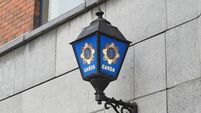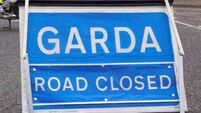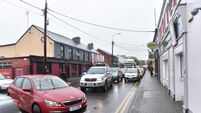Council to write to ESB amid concerns over birds colliding with power lines in Cork Harbour

The ESB is to be asked to do something to stop birds being killed when colliding with overhead powerlines in Cork Harbour.
The ESB is to be asked to do something to stop birds being killed when colliding with overhead powerlines at a Special Protection Areas (SPA) for wildlife in Cork Harbour.
A mounting number of bird carcasses have been found on the ground at the Ringabella SPA, which many believe is associated with the powerlines.
Independent councillor Marcia D'Alton, who is an environmental engineer, won support from Cork County Council colleagues when she asked that they write to ESB Networks urging it to address the situation.
“For many years, collisions and electrocutions of birds at power lines have been a silent but major conservation issue. Thin electric lines can blend into the horizon, are hard to see, and are often right at bird-flight level.
"This means that birds often can’t detect them before flying into them. And when flying in a flock it could be too unwieldy to change course at the last second. It is estimated that globally, collisions with power lines may cause more than one billion bird deaths each year,” Ms D'Alton said.
She pointed out that Cork Harbour is of international importance, especially because of the large numbers of migratory winter visitors.
“It supports nationally important wintering populations of 22 species. For that reason, large parts of its tidal mudflats are designated as Special Protection Areas (or SPAs) under European legislation. These and the land that surrounds them are especially important for supporting the harbour’s wild bird population,” Ms D'Alton said.

One of the areas designated within the SPA is the estuary of the Minane River at Ringabella. Cork Harbour itself was designated in 2008. When Dublin City Council built the Port Tunnel, an area of designated SPA was lost.
Ms D'Alton pointed out that The European Court of Justice, (EC Case C-418/04), instructed Ireland to provide habitat to compensate for this lost area. So Ringabella was adjudicated to be the closest suitable compensatory habitat and was added to the Cork Harbour SPA in 2015.
The land upstream of the dam at Ringabella comprises wet grassland, wet woodland and scrub. Below the dam, the mudflats provide rich feeding. The inner and mid estuary is largely inaccessible and uninhabited and so is generally secluded and disturbance-free.
Bird counts have been taken there since 1997. In total 44 waterbird species have been recorded, several of which are listed in Annex I of the Birds Directive and during this time. The site has regularly supported numbers of Black-Tailed Godwit that have exceeded the threshold of all-Ireland importance.
Ms D'Alton added there has been “significant local concern over the past couple of years” at evidence that these power lines are causing bird fatalities due to collisions. The fatalities appear to occur in one restricted area over Gortigrenane Marsh.
“Protection of SPAs is legally enshrined and habitat disturbance, degradation and direct impact on species is prohibited. Moreover, Ringabella was designated on foot of an instruction from the European Court of Justice,” Ms D'Alton said.













